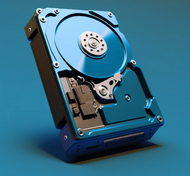Data Transfer Rate in Hard Disk Drives
Data transfer rate is an important specification for hard disk drives (HDDs) that measures how quickly data can be transferred between the drive and the computer's memory. This specification is usually expressed in megabytes per second (MB/s) or gigabytes per second (GB/s), and it indicates the maximum speed at which the drive can read or write data.
The data transfer rate of an HDD is determined by several factors, including:
- The rotational speed of the drive's platters
- The density of the data on the platters
- The interface used to connect the drive to the computer
Let's take a closer look at each of these factors:
Rotational Speed
One of the key factors that affects data transfer rate is the rotational speed of the drive's platters. HDDs use spinning magnetic disks to store data, and the faster the disks spin, the faster the drive can read and write data. Most consumer-grade HDDs have rotational speeds of either 5,400 or 7,200 revolutions per minute (RPM), while higher-end drives may spin at 10,000 or even 15,000 RPM.
The faster the platters spin, the faster the data transfer rate of the drive. For example, a 7,200 RPM drive will generally have a faster data transfer rate than a 5,400 RPM drive. However, faster spinning platters also generate more heat and noise, so there are trade-offs to consider when choosing an HDD.
Data Density
Another important factor that affects data transfer rate is the density of the data on the platters. HDDs store data by magnetizing tiny areas on the surface of the platters, and the more densely packed these areas are, the more data can be stored on each disk. This increased data density also translates to faster data transfer rates, since the drive can read or write more data with each rotation of the platters.
Interface
The third factor that affects data transfer rate is the interface used to connect the HDD to the computer. Most modern HDDs use a Serial ATA (SATA) interface, which can support data transfer rates of up to 6 gigabits per second (Gbps). However, older drives may use interfaces like IDE or SCSI, which have lower maximum transfer rates.
Other factors, like the size of the drive's cache and the speed of the computer's memory, can also affect data transfer rates. However, the three factors discussed above are the most significant when it comes to understanding how data transfer rates work in HDDs.
In conclusion, data transfer rate is an important specification to consider when purchasing an HDD. By understanding the factors that affect data transfer rates, you can choose an HDD that provides the speed and performance you need for your particular application.






